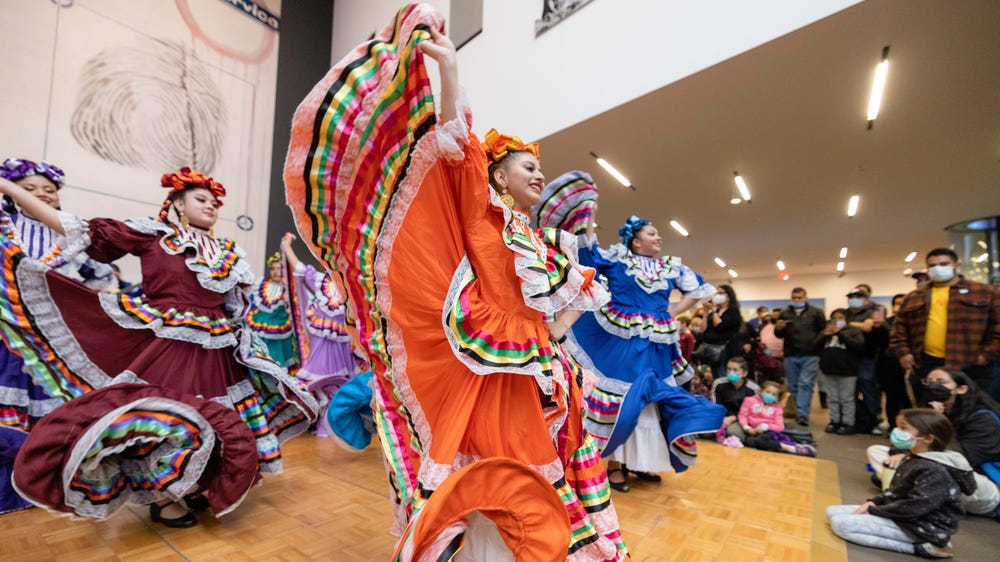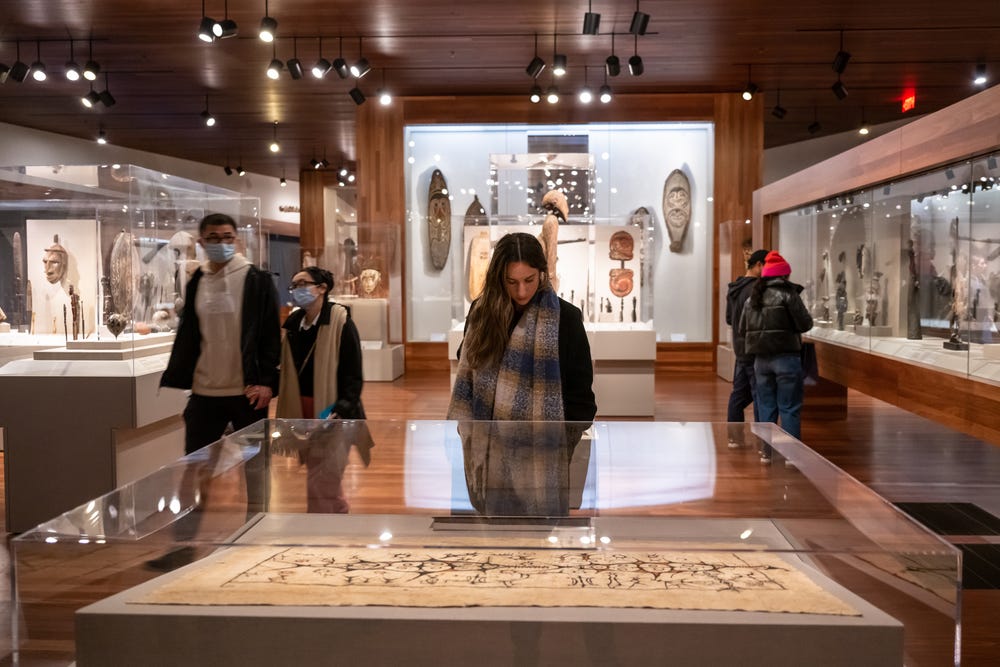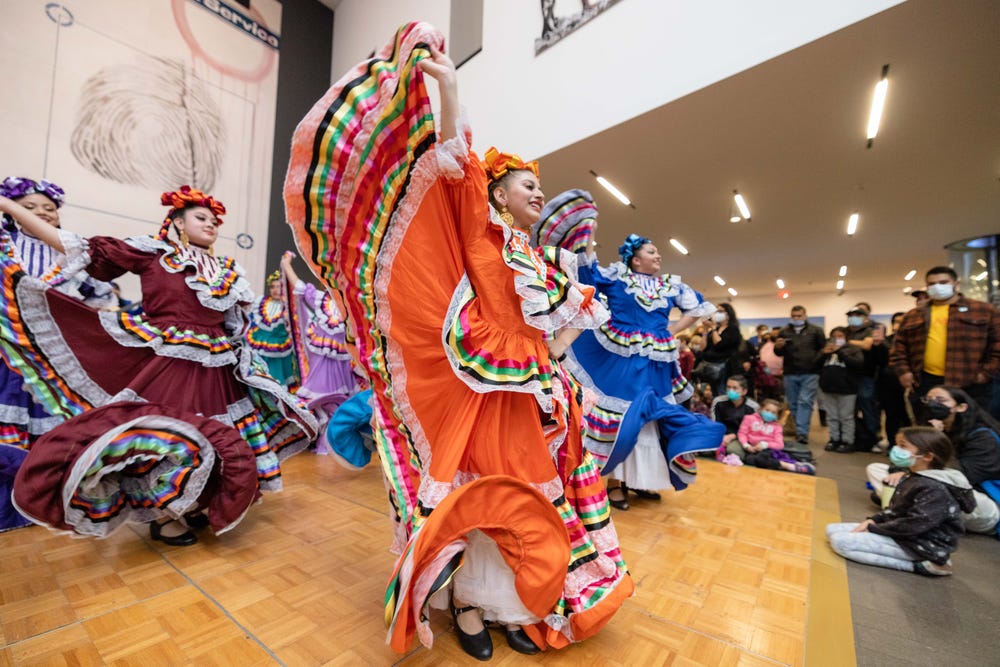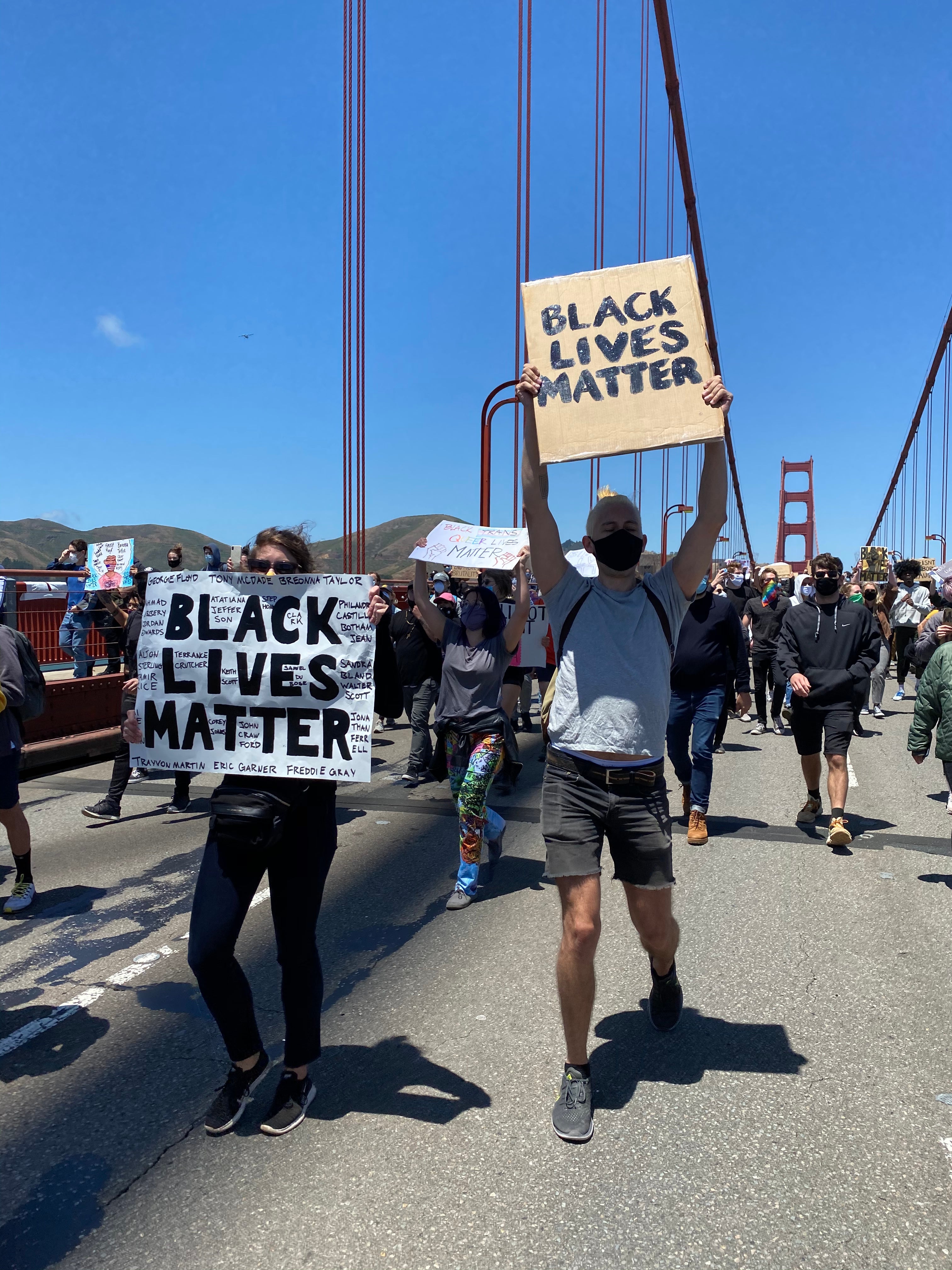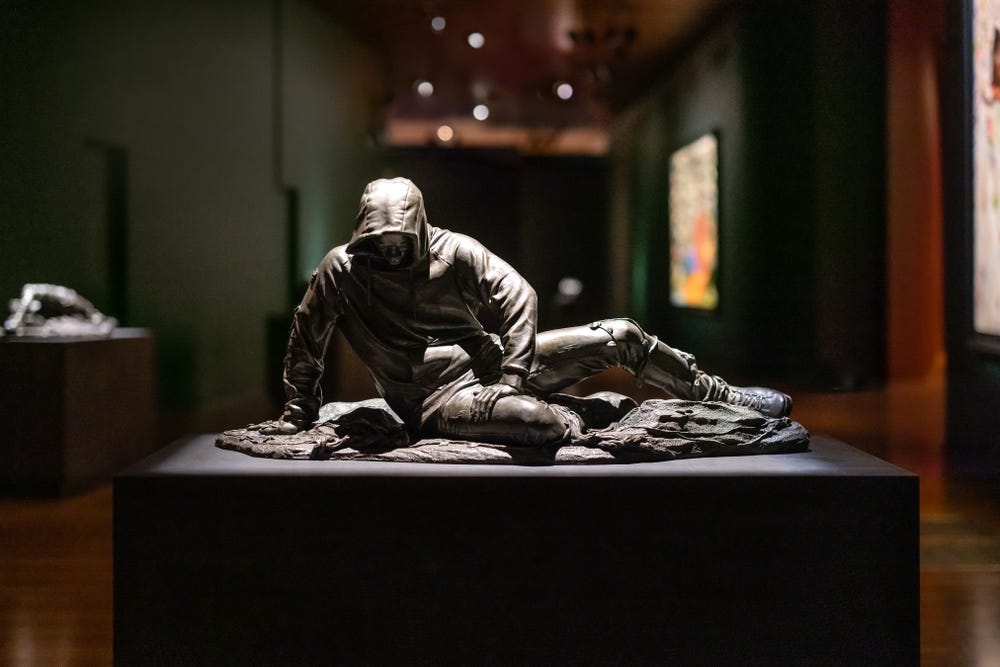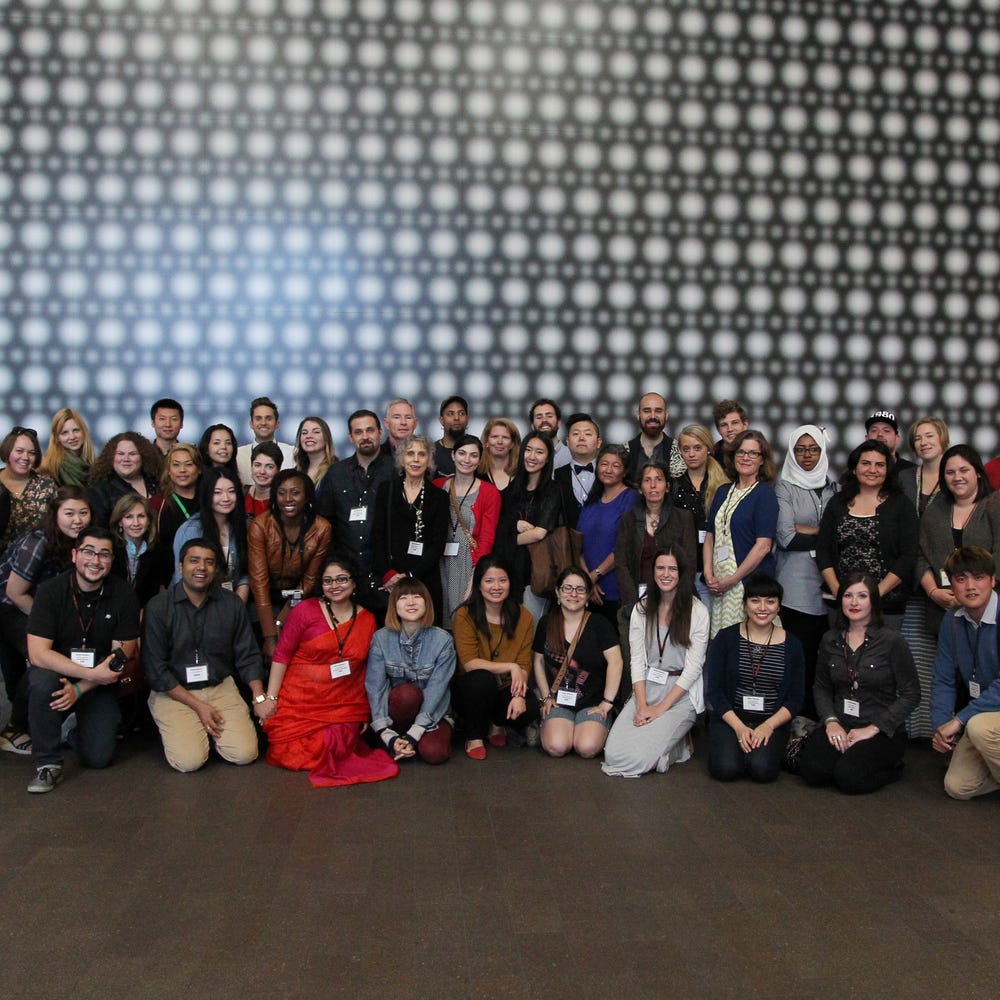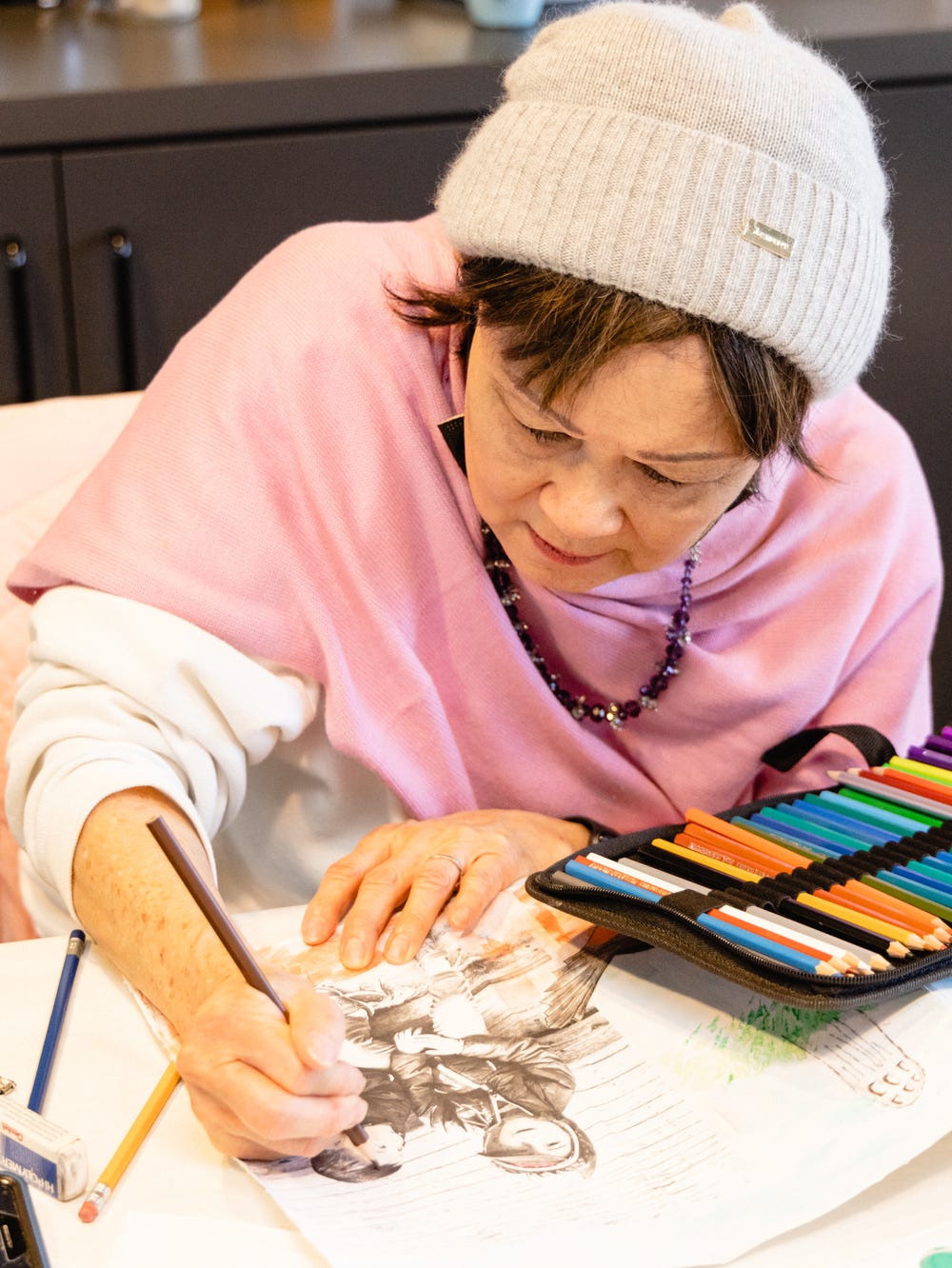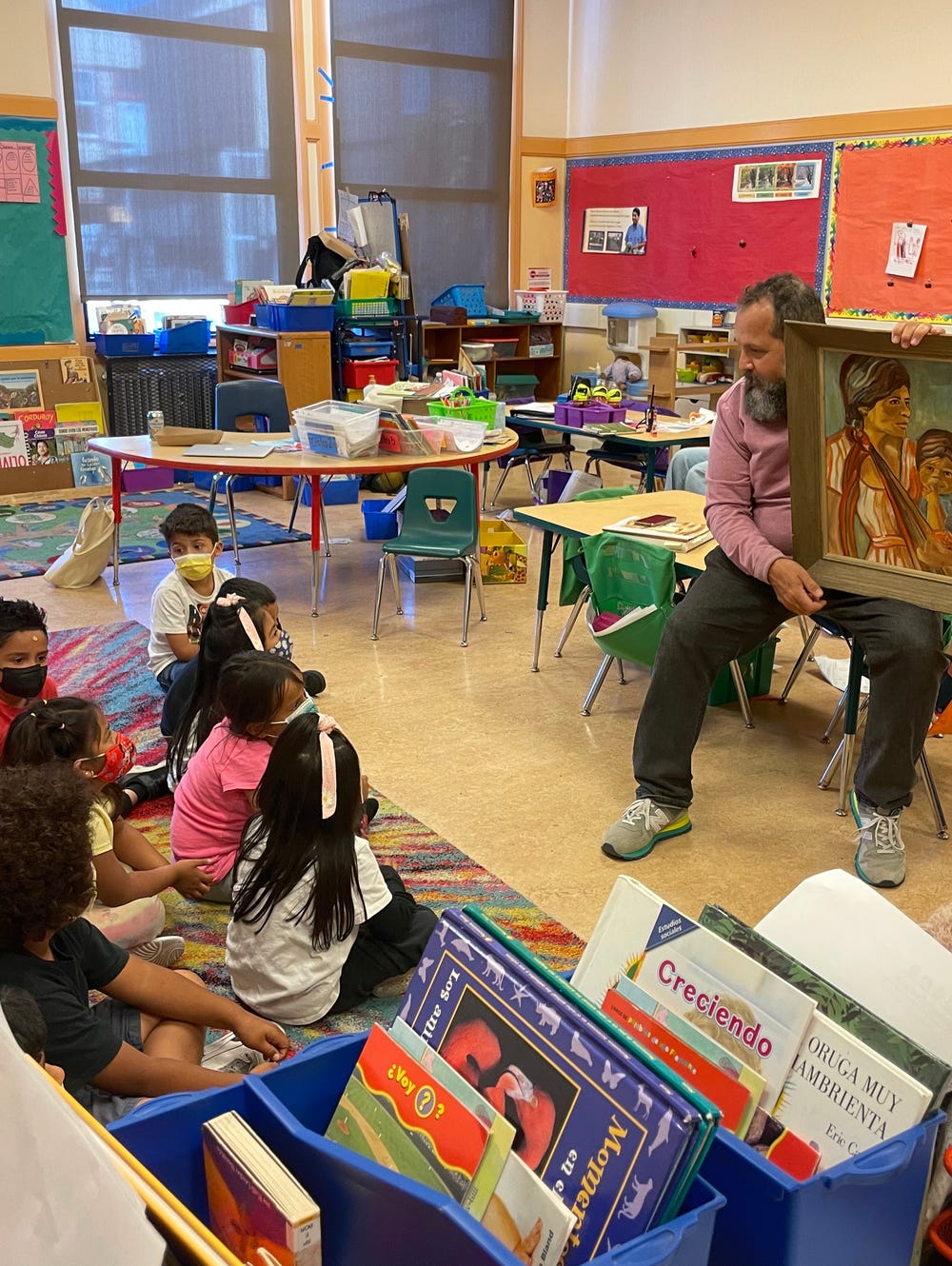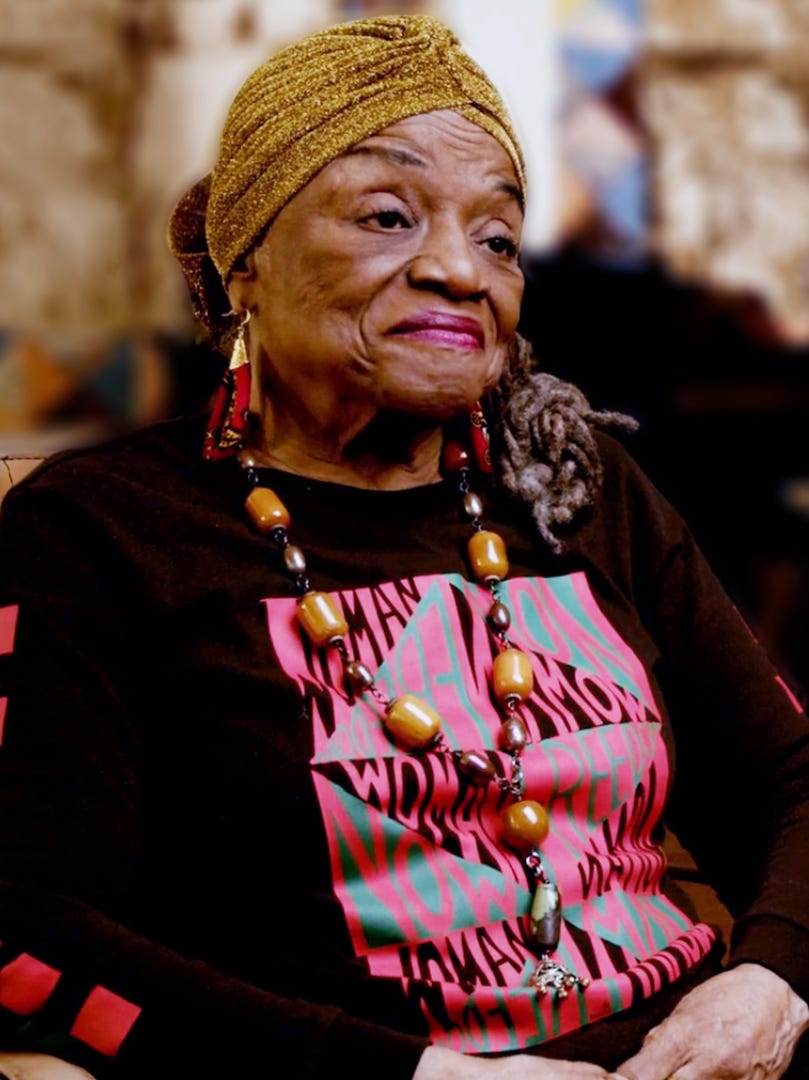Dancers from Cuicacalli SF perform during a Free Saturday at the de Young. Free Saturdays offer free admission to the permanent collection and public programming for residents of the nine Bay Area counties. Photography by Gary Sexton
I am an editor of the Anti-Racism and DEIA article series you are currently reading. In this series, we share updates on DEIA work from departments across the Museums, driven by our commitment to work toward becoming an anti-racism institution. These articles provide explicit case studies of the actions we are taking institutionally — many of which are grounded in the efforts of dedicated colleagues who worked for years to advance and advocate for DEIA initiatives. Many of these colleagues were part of the passionate group that founded the IDEA Committee in January 2018.
The IDEA Committee stands for inclusivity, diversity, equity, and access, and is a staff-led group that facilitates crucial conversations and advocates for change at FAMSF. In this article, I share some successes and acknowledge challenges the IDEA Committee has worked through in our past five years. This text is framed (as are our efforts) by our working agreements for the group — the text you see italicized throughout.
WORKING AGREEMENT
Move up / Move up. If you’re someone who tends to not speak a lot, please move up into a role of speaking more. If you tend to speak a lot, please move up into a role of listening more. This is a twist on the more commonly heard “step up, step back.” The “up/up” confirms that in both experiences, growth is happening.
Our inaugural meeting was convened by our Human Resources department with a goal to understand institutional perceptions, needs, priorities, and DEIA initiatives already underway. A scrappy group of self-selected staff from many departments and seniority levels brought our varying perspectives to this and all subsequent conversations.
We quickly made the meeting recurring. Groups formed to draft a mission statement, create working agreements, conduct benchmarking from peer organizations, and identify immediate action items. The first months included an inclusivity reading group led by cultural strategist, educator, and author Keonna Hendrick and a city-sponsored “Creating an Inclusive Environment” training facilitated by anti-racism consultant Dante King.
We adopted the name IDEA Committee in August 2018. Before the end of the year, we also conducted our first staff diversity survey and ratified our mission statement, which read:
The IDEA Committee shifts how FAMSF works in order to increase diversity in our collections, exhibitions, programs, visitors, and staff. IDEA challenges norms in order to adopt new practices focused on inclusivity, diversity, and equity. These behaviors demonstrate our commitment to respecting and amplifying the voices of all people and cultures.
Visitors enjoying Free Saturdays in the Arts of Oceania galleries. Photography by Adam Jacobs
In 2019, the group grew from around 20 attendees to a more consistent group, between 45 and 60 attendees. A framing group was established to schedule meetings, set agendas, and serve as stewards for the larger group.
Our most time-intensive work of 2019 was the IDEA Initiatives Ballot. Working within the five areas outlined in our mission (collections, exhibitions, programs, visitors, and staff), breakout groups brainstormed DEIA initiatives we hoped to see realized at FAMSF. The groups presented their proposed initiatives to the IDEA Committee, and all initiatives were charted on a matrix of cost and time. The top voted initiatives were:
Collections
- No / Low Cost: Encourage acquisitions of artwork driven by DEIA values
- Cost: Focus on permanent gallery rotations and new interpretation with DEIA lenses
Exhibitions
- No / Low Cost: Re-examine marketing strategies and budgets
- Cost: Grow endowment → alleviate financial dependency on special exhibitions
Programs
- No / Low Cost: Increase internal communication about programs and exhibitions
- Cost: Upgrade technology for accessibility purposes (including website)
Visitors
- No / Low Cost: Grow community partnerships and broaden scope to larger Bay Area
- Cost: Reduce barriers to entry, including identifying free admission opportunities
Staff
- No / Low Cost: Complete salary analysis and benchmarking
- Cost: Establish and hire a new role: DEIA Officer
Additional initiatives identified in the ballot:
- Produce new “selected works” publications of the Museums collections
- Improve internal communications
- Open exhibitions meetings to all staff
- Provide additional translated materials
- Add new and increased on-site signage
- Implement customer service standards
- Update website
- Complete competitive title and salary adjustments
- Hold mandatory implicit bias trainings
Dancers from Cuicacalli SF perform during a Free Saturday at the de Young. Free Saturdays offer free admission to the permanent collection and public programming for residents of the nine Bay Area counties. Photography by Gary Sexton
WORKING AGREEMENT
Don't freeze people in time. Our conversations are living and changing, therefore trust that people’s opinions can grow and change too!
One of the first issues the IDEA Committee identified to change was unpaid internships. The committee helped establish the Opportunities for All city-sponsored internship program, the precursor to our paid summer internship program. We also advocated for staff training and helped select Be The Change to lead our racial equity training.
The list of initiatives was combined with the then-ongoing strategic planning process. Our director, Thomas P. Campbell, also received a presentation from IDEA framers on their work. This offered us opportunities to advocate for our list of initiatives — with the intention they be explicitly integrated and budgeted into the strategic plan.
That strategic plan was circulated to staff in early 2020. We had barely dug into this new North Star document when the COVID-19 pandemic forced the closure of the Museums. I worried much of this well-planned and thoughtful work would be paused. Instead, we found new ways of practicing the values of inclusivity, diversity, equity, and access.
WORKING AGREEMENT
We emphasize our own agency and power, not our powerlessness.
Black Lives Matter protest on Golden Gate Bridge, September 7, 2020. Image courtesy of the author
As we entered summer 2020, protests and civil uprising fueled by the murders of George Floyd, Breonna Taylor, and countless others were occurring across the world. Locally, I attended many rallies and protests, as did many of my FAMSF colleagues. After months of disconnection and seeing each other only over Zoom, I was suddenly running into coworkers every week in the streets, all of us carrying homemade cardboard signs. That spirit of unrest and desire for change obviously seeped into our conversations at work, especially between members of the IDEA Committee. We knew the Museums had a responsibility to engage.
Before the pandemic, we had chosen the DEI training company Be The Change to lead us in racial equity training during a daylong, on-site workshop. Be The Change pivoted their work and instead offered a series of virtual interactive anti-racism coursework. Because it was offered over several weeks, rather than one day, this curriculum had a deeper impact. The coursework provided us with many tools, including a shared language of terms and definitions with which to talk about DEIA.
Our director made a statement of solidarity with the Black Lives Matter movement in June, and a few months later, the Museums denounced the despicable rise in anti-Asian racism and violence happening in San Francisco and nationally. These were some of the first explicit stances on current events (not directly tied to art) that FAMSF had made. This precedent, along with our recent anti-racism training, empowered the IDEA Committee to advocate that FAMSF do something in addition to saying something: to create bridges between intentions and actions.
WORKING AGREEMENT
No one knows everything; together we know a lot. This means we all get to practice being humble, because we have something to learn from everyone in the room. It also means we all have a responsibility to share what we know, as well as our questions, so that others may learn from us.
Following an all-staff summit led by museum leadership and the board, members of the IDEA Committee stepped forward to organize months of internal conversations between leadership, the framers, and staff as needed. The Museums’ strategic plan was recalibrated in the fall of 2020, and these IDEA Committee–led meetings played a significant role in the way DEIA initiatives were woven into the strategic plan at every level — as central guiding principles, as discrete departmental priorities, and as our top institutional goal of becoming an anti-racism organization — a shift that was shared publicly in November 2020.
As we entered another pandemic year, we launched the Anti-Racism and DEIA web article series to transparently track our progress and hold ourselves accountable. Working groups tackled specific issues, including contributing to the development of the FAMSF Land Acknowledgment and the creation of an institutional DEIA style guide.
This is what I believe was and is special about the IDEA Committee: We carved out a rare space at FAMSF where colleagues could meet across departments and hierarchies, often for the first time. We constructed a space (in-person and virtual as needed) where staff met to have cross-divisional conversations and discussed issues affecting our institution outside of our formal job responsibilities. We switched from working urgently to working thoughtfully.
The only constant is change with the IDEA Committee, which I believe has been one of its strengths. It’s been hard to pin down our structure and categorization. Do we need express permission to advance our work, or do we have institutional buy-in? Are we advocates or activists? Is IDEA structured or unstructured? Today, we know we have buy-in and that we work as advocates — and we are about to impress a bit more structure on ourselves.
Kehinde Wiley’s Dying Gaul, after a Roman Sculpture of the 1st Century (2021) currently on view in Kehinde Wiley: An Archeology of Silence. This bronze was acquired for FAMSF’s permanent collection. Photography by Gary Sexton
WORKING AGREEMENT
Create a brave space: While we often hear calls to create safe spaces, we encourage participants to embrace the idea of “brave spaces” where we listen and share with courage. This means that sometimes we may not always feel safe, but if we are brave with each other, we are much more likely to listen and share with honesty and openness.
Last summer and fall, our first ever manager of diversity and inclusion, Courtney Jones, led the IDEA Committee through a restructuring process. We established the function of the IDEA Committee in the near future and wrote an updated mission statement framed by our values of centering people’s experience of art, self-awareness, communities, and impact:
The IDEA Committee is an equitable community. We actively remove barriers to access, foster inclusion and belonging, and champion diversity. Through reimagining and reinventing our personal, institutional, and societal practices, we are changing the narratives we tell about our art, our histories, and ourselves. We lead with collaboration, kindness, empathy, bravery, and respect. Together, we are building a better future.
With our new mission, values, and positioning established, we relaunched the IDEA Committee as FAMSF’s first official employee network. Currently, we are nominating and electing new leadership positions. As the original framers pass the baton, I want to say I am very grateful to my colleagues, past and present, who poured so much of themselves, their lived experiences, into the IDEA Committee.
The restructured IDEA Committee will be a group in which staff come together to identify, discuss, and encourage actions that align with the institution’s anti-racist values. The group will work with the manager of diversity and inclusion on anti-racist topics in coordination with institutional initiatives. Additionally, we will work to establish a “train the trainer” program to further conversations on DEIA topics, informed by our capacity-building work with Be The Change, which encouraged connection across divisions.
In reflecting on our work, I can say with confidence that the IDEA Committee has helped shift FAMSF at an institutional level. Looking at the receipts, way back to the IDEA Ballot of 2019, almost all of the initiatives we advocated for have been completed or are ongoing efforts. Most significantly, we no longer have to ask for permission to engage in this work, no longer have to carve out one designated space for these conversations. DEIA and anti-racist work is now the top institutional priority, and we have conversations about how to bridge intentions to actions across the organization every day. I look forward to continuing this work with our multiple communities and my inspiring colleagues, as we continue on our never-ending journey toward becoming an anti-racist organization.
Text by Francisco Rosas, Internal Communications and Content Project Manager
Note: The IDEA Committee Working Agreements (presented throughout this post), were adapted from the Working Agreements shared at the NAEA Museum Education Preconference on March 13, 2019. Compiled and adapted by Elisabeth Callihan from meeting agreements from MASS Action and the Allied Media Conference. Language for “brave space” adapted from materials provided by Keonna Hendrick.
